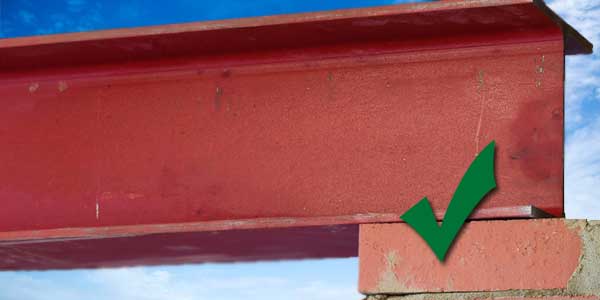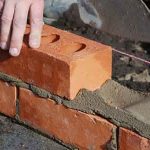Structural beams are commonly used in new builds and alterations to existing structures. When installing beams, you need to make sure they are safe and secure. They take large loads and distribute them evenly. For this reason, you must use padstones that are strong enough to support the weight.
Padstones are an important part of the construction process. They ensure that the load-bearing beams have the right support.
So, can you use something like engineering bricks as padstones, or are they not strong enough?
You can use engineering bricks as padstones in some instances. Their compressive strength means that they are suitable for certain construction projects.
However, whether engineering bricks can be used, will depend on the overall load they are expected to support. This will be different on every job. Structural drawings and building control will be able to tell you what padstones are suitable for different jobs.
What are padstones and why are they used?

When a home or structure is built, there will be load-bearing and non-load-bearing walls. Load-bearing walls are designed to support the weight above. If load bearing walls are removed or not installed, then structural beams are often used.
Reinforced Steel Joists (RSJ) are the most common form of beam. They are designed to support the load that a load-bearing wall usually would. To be effective they must be installed correctly into the walls at either end.
For the beam to be installed safely and securely, it needs to be installed on a padstone. The padstone is designed to support the end of the beam and the load that is transmitted through it. This means, that it will need to have the right strength, so it can handle the load.
The compressive strength of the padstone must be higher than the pressure and weight coming through the beam. If it is lower than this, it could result in crushing, cracking, and eventual failure.
The main goal of the padstone is to offer higher strength than the wall below it. This will help to distribute the load evenly and it will protect the wall below.
Why engineering bricks can make good padstones
Engineering bricks have high compressive strength, which is exactly what you need in a padstone. However, they are the size of standard bricks, making them smaller than other padstones like large dense concrete padstones.
But due to their compressive strength they can handle much heavier loads than standard bricks or block-work.
Engineering bricks come in two different grades. These are Class A and Class B.
- Class A engineering bricks have a compressive strength of 125N/mm2
- Class B are slightly weaker with a strength of 75N/mm2.
As you can see, the strongest engineering brick is the Class A, so it would be the preferred choice as a padstone. However, it is possible to use Class B in some cases, where there is less weight overhead.
The structural calculations will determine the size of the padstone. In general, padstones should be one solid unit, with a compressive strength of at least 10N/mm2. If the size of padstone is less than 215mm x 100mm, then engineering bricks can be used.
Materials that can be used as padstones
The main thing to consider is that the padstone you use is suitable for the job. As a result, it must be able to support the beam and the load. However, it is not a case of using any kind of material to support the beam, as this could lead to complete failure with weaker materials.
The padstone must have adequate compressive strength, so it can withstand the weight it is supporting. The structural calculations will give you an idea of the type of padstone that you can use.
The most common types of padstone are:
- Dense concrete blocks
- Proprietary concrete padstones
- Engineering bricks
There are other options that you can consider such as concrete lintels, steel spreader plates and concrete placed in situ.
Materials you shouldn’t use for padstones
A padstones main goal is to maintain the strength of a structure. This means there are some materials that are definitely not suitable. The most important thing to consider, is that the padstone needs to have a higher strength than the materials in the wall below it.
You should avoid using the likes of facing bricks. These are commonly used in the construction of external walls, and they do not have the compressive strength required for use as a padstone. You should also avoid using common bricks, as these usually have an even lower compressive strength than facing bricks.
Thermalite blocks are also not suitable for use as padstones, because they have a low compressive strength of around 7.3N/mm2. It might also be tempting to consider breeze blocks, but they are also far too weak. Their compressive strength ranges from 3.6 to 7.3N/mm2.
However, it is also worth noting that padstones are not always required. The wall strength and load might mean the wall isn’t over-stressed. This could mean padstones aren’t needed. Along with this, using the same material throughout the wall will help to reduce thermal bridging.
What is important is that you follow the specification for the beam and the structural drawings. This will ensure that your structure is safe and secure while meeting all regulations.
Conclusion
Padstones are crucial to the structural integrity of many buildings. What you decide to use as padstones will depend on the load and the structure, and there are several options available. It is certainly possible to use engineering bricks in many cases. They have a high compressive strength and that means they can be used, providing they meet all the relevant calculations and building regulations for the job.




